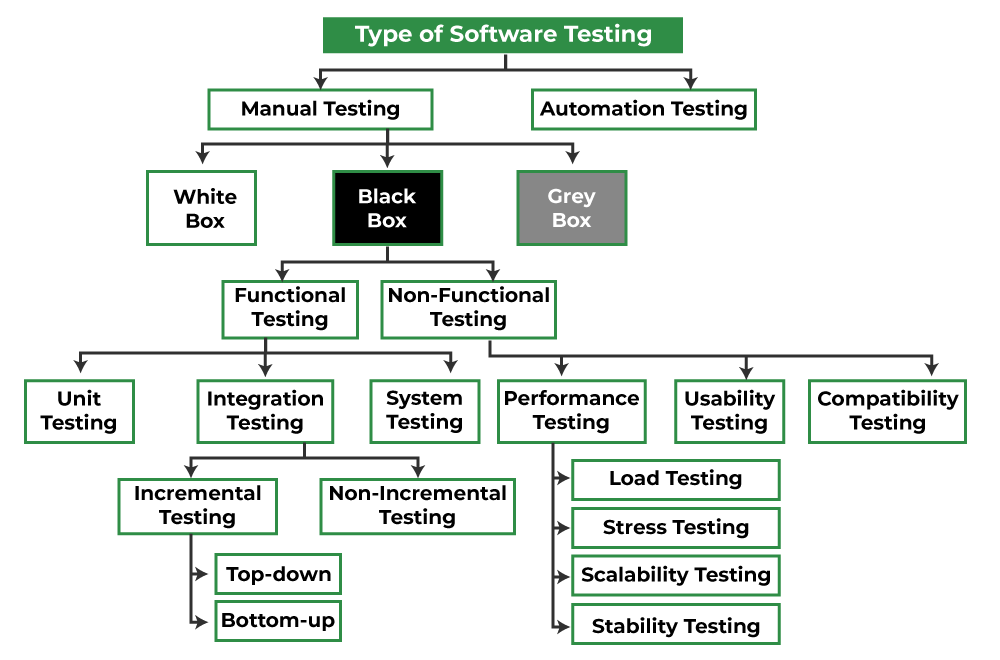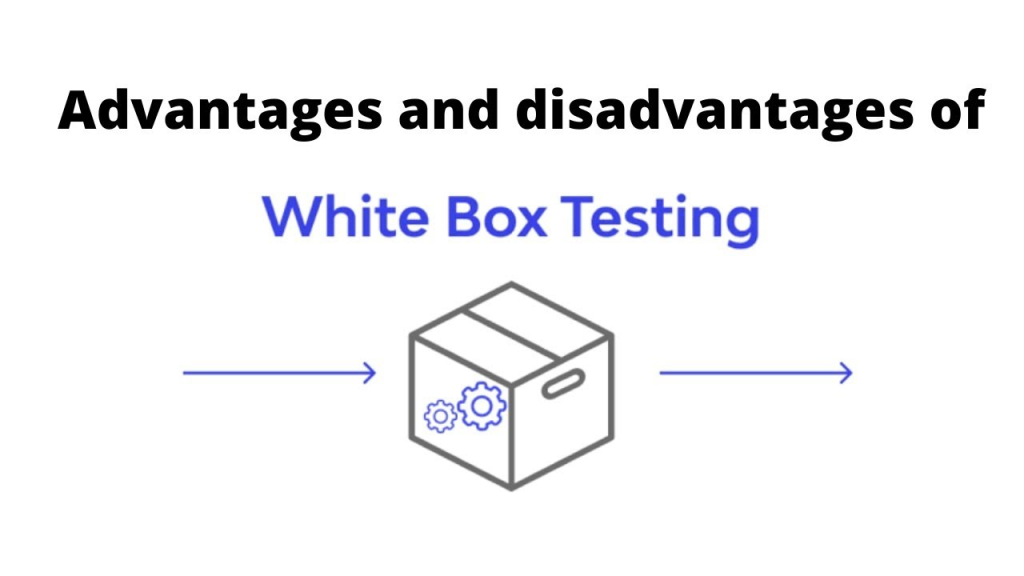
Hey all,
In this blog, I will let you know the manual testing techniques and best practices in different series.
Series1. White box testing, Black box testing, and Gray box testing
Series2. Functional Testing
Series3. Non-Functional Testing
What is Good Software Testing?

Software testing is the best way to know the status of your products or applications and this will reduce your development cost and time because after doing the software testing you will be able to know the internal and external structure of the application and product.
The method of this testing is to know about the customer’s expectations. In the software testing process, the tester will do the testing of functions and find the errors and defects in the software or application. The purpose of software testing is to identify errors, gaps, or missing requirements in contrast to actual requirements. During the software testing process, a tester will let you know that the primary goal of software testing is to detect and fix errors in the software to deliver a reliable and high-quality product to your customers.
The aim of the software testing process is to meet the client’s expectations and identify & rectify defects, bugs, or missing functionalities before releasing the software or product.
Why Software Testing is Important?

As we all know, there are so many bugs generated during the development phase and we need to know whether the functions or expectations will meet the client’s expectations or not. that’s why we need to do the testing.
The tester will perform the testing to identify issues early, allowing for timely resolution before the delivery of the software or product. After completing the testing process, you can ensure that your application or product is reliable, secure, and high-performing. This, in turn, leads to time savings, cost-effectiveness, and increased customer satisfaction.
What are the benefits of Software Testing?

There are so many benefits of software testing, and I am writing some benefits here for your reference.
- Improved Quality – This is the most effective phase of every software because if the quality of your product meets the client’s expectations after that, you can deliver your product for the purpose of using.
- Improve customer Satisfaction – That means if your product’s quality is too good and the functions are running well then your customer will be satisfied by your application or product.
- Cost Saving – In the development phase we will invest too much money in the development of the software but this is not good for developing the software because if we do not understand whether my application or product is working well or not we are only invective our money for the development that’s it, but if I have an idea about my products after that, we can make a plan for the launching of our product and for knowing all these processes we will have to do the testing and by doing the testing you can meet your client’s expectations and you can save your costs.
- Enhanced Security – This is the most vulnerable and sensitive benefit of software testing because people are looking for the trust of every software and if you give the trust to your users after that users will be attracted to your application and they will love to use your product. That’s why every software needs to work on its security and safety.
- Advance the Development Process – In this process, a testing team and development team will work on the same platform, and due to this tester will find bugs and they will directly deliver these bugs to the development team and the development team will start to work quickly without impacting the performance of other functions or securities of the product.
What are the types of Software testing?
There are many types of software testing that we use for our work. I am writing specifically about manual testing, so I will provide you with information on manual testing.

White Box Testing.
White box testing is the process of code and internal structure review testing which means, in the white box testing process a tester will do the proper testing a code-wise, and the white box testing is done if the tester has an idea about the technical process of development and has also knowledge about the codes after that you can complete your white box testing.
We are also calling this testing technique clear box testing because during this testing technique, a tester will analyze the internal structures the used data structures, internal design, code structure, and the working ability of the software or products. By following the clear box testing technique the tester does not only do the testing no, but he also has to prepare test cases in each and every step due to this The tester has access to the source code and uses this knowledge to design test cases that can verify the correctness of the software or application at the code level.
Working process of White Box testing.
- Input: Takes Requirements, Functional specifications, design documents, and source code from the manager or the client
- Processing: A tester will perform a risk analysis to guide the process of development
- Proper test planning: A tester must be prepared to design test cases to cover the entire code. Execute rinse-repeat until error-free software is reached. Also, the results are communicated and the last is your users will be satisfied.
- Output: After completing all these steps the tester will start to prepare the final report of the entire testing process.
Key Principles and Objectives of White Box Testing

The Key principles of White box testing are as follows
- Build the Internal logic – A tester needs to be familiar with the internal and structural details before starting work on the application and implementing their code.
- Verify the path – The path verification process is crucial because if you get stuck while verifying the path lane, you can determine where you need to go and set the correct path.
- Knowledge about the code – During the white box testing technique, a tester gains insights into the entire code structure. This understanding is crucial for troubleshooting, as it allows us to pinpoint where issues may arise. This process involves assessing loops, conditions, and branches to ensure the code behaves as expected under various scenarios.
- Data Flow Analysis – We need to possess comprehensive knowledge of the data flow, as it entails scrutinizing how data moves within the system. Identifying the pathways through which data traverses the application is essential for uncovering vulnerabilities.
The Objectives of White box testing are as follows
- Check Functionality – The first thing to do is verify the functionality of the application because if the code functionality is not working well, it would be a waste of our time. This involves validating inputs, outputs, and the overall behavior of the software.
- Error Detection – White box testing enables the early detection of issues, thereby reducing the likelihood of defects in the final product. The primary goal of white box testing is to find bugs and address issues.
- Security Validation – By following the SDLC process in white box testing, the tester will conduct security testing. Users feel more comfortable when they are assured of the application’s security. Providing this satisfaction enhances user trust, making them more inclined to love and use the application.
- Performance verification – White box testing can optimize the performance of any application. During this testing, you can identify functions that are not performing well and determine where improvements can be made to enhance overall performance.
Advantages and Disadvantages of White Box Testing?

White box testing is called clear box testing because they are working in transparency and they will give the result in a short time.
- Thoroughness – White box testing is a process that delivers reliable results for the application. During this testing process, it provides us with a comprehensive examination of the code, covering all possible paths and conditions. This testing helps us detect issues and bugs.
- Code Optimization – White box testing enhances the smoothness of the flow by identifying unnecessary code segments and redundant logic. This process improves the performance of every application.
- Error Detection – By using clear box testing you can easily detect the internal bugs in every software or application and that can be fixed easily by the developers.
- Effective Security – This is the important point of every software or application because if you have not delivered good security facilities to your customers then your customers will not use your application due to this reason white box testing can find the security errors easily and it will take a very short time for doing that work.
- Code Quality Improvement – The SDLC provides a robust testing process known as white box testing, which enables you to improve your defective codes. White box testing can easily detect incorrect codes and identify non-working functions within minutes during the testing process.
Disadvantages –
- High Cost – White box testing incurs high costs for completion as it requires testers with a technical mindset who utilize specialized tools to find bugs. White box testing is not feasible for non-technical individuals.
- Time – Consuming – Due to finding the incorrect code it will take some time to find the non-functional codes. and this testing process will need to check the functions whether it is working or not.
- Limited Scope – This testing technique will find the internal code structures but it can’t find the other external issues which is why it has a limit to the testing.
- Update test cases – Due to code changes, a tester needs to change the test cases made in the new cases and deliver this test case to the developer so that the developer can change the codes into the new ones.
- Focus on Implementation codes – testing is not a small process because, in the testing tenure, a tester will verify all the functions that were developed by the developers. After that, if the tester sees any issue they will directly create a test case for this issue and focus on the implementation for the bugs. Mainly white box testing is the process of finding the bugs if the function is not working a tester will send this issue to the developer and the developer will do the implementation on it.
Tools are required in White box testing:
- PyUnit
- Sqlmap
- Nmap
- Parasoft Jtest
- Nunit
- VeraUnit
- CppUnit
- Bugzilla
- Fiddler
- JSUnit.net
- OpenGrok
- Wireshark
- HP Fortify
- CSUnit
Write about the features of white box testing.

White-box testing, also known as clear-box testing, is a software testing method that examines the internal structure of the code to identify potential errors.
- Code-Level Inspection – White box testing is an effective method for gaining code-level knowledge during testing. If you are conducting white box testing, it is essential to first acquire code-level knowledge before proceeding with the testing. This testing approach allows for a thorough inspection of any software or application.
- Early Detection of Bugs – White box testing can easily detect bugs. When conducting white box testing, all the functions developed in the software or application are thoroughly checked, facilitating the early detection of bugs.
- Data Flow Analysis – It is very important in Every software for the working of its data flow because the data flow will do the every work for any software and if the data flow is incorrect then you have to do the testing on it and make the correction asp.
- Performance testing – You can’t imagine the performance of every software or application is very important because software will work good how? because of its better performance your application will run smoothly and very fast. that’s why we need to do the testing on the performances of every software.
- Internal Functions Verification – Internal Functions Verification – As we all know, white box testing excels in the internal testing of the code and structure levels. Internal testing is crucial for ensuring the smooth functioning of every software or application.
- Knowledge of Programming Languages – Testers performing white-box testing must have knowledge of programming languages like Java, C++, Python, and PHP to understand the code structure and write tests. This specialized knowledge allows them to create test cases that effectively exercise the code’s logic and identify potential errors.
- Validation & verification – After completing the software development process every software development company moves to the testing process why? because without a validation & verification process, you can’t deliver the product to your client and in this testing process a tester will check end to end flow of every application and software in full flow. after that, you can deliver the software to your users.
Your thoughts matter! Feel free to share your valuable comments and insights. Let’s make this conversation even more enriching together!
Thanks,